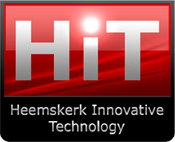Influence of Visual Feedback on Human Task Performance in Remote Handling
Abstract:
In ITER, maintenance operations will be largely performed by remote handling (RH). Before ITER can be put into operation, safety regulations and licensing authorities require proof of maintainability for critical components. Part of the proof will come from using standard components and procedures. Additional verification and validation is based on simulation and hardware tests in 1:1 scale mockups.
The Master Slave manipulator system (MS2) Benchmark Product was designed to implement a reference set of maintenance tasks representative for ITER remote handling. Experiments were performed with two versions of the Benchmark Product. In both experiments, the quality of visual feedback varied by exchanging direct view with indirect view (using video cameras) in order to measure and analyze its impact on human task performance.
The first experiment showed that both experienced and novice RH operators perform a simple task significantly better with direct visual feedback than with camera feedback. A more complex task showed a large variation in results and could not be completed by many novice operators. Experienced operators commented on both the mechanical design and visual feedback. In a second experiment, a more elaborate task was tested on an improved Benchmark product. Again, the task was performed significantly faster with direct visual feedback than with camera feedback. In post-test interviews, operators indicated that they regarded the lack of 3D perception as the primary factor hindering their performance.
